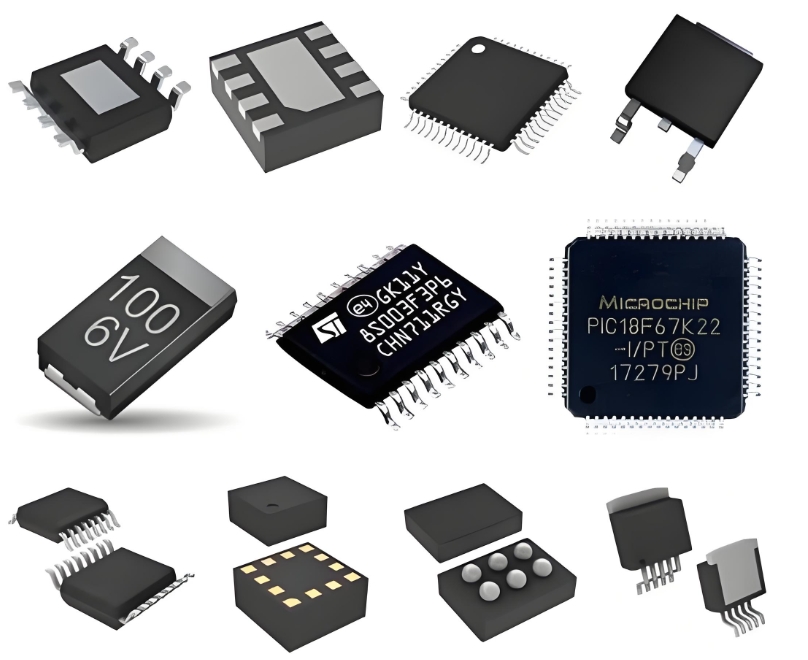**The ADM232LJN: A Comprehensive Technical Overview of a Classic RS-232 Driver/Receiver**
In the realm of serial communication, the **RS-232 standard** has been a cornerstone for decades, enabling data exchange between Data Terminal Equipment (DTE) and Data Communication Equipment (DCE). While modern systems often favor USB or Ethernet, a deep understanding of the components that made this standard possible remains crucial. Among these, the **ADM232LJN from Analog Devices** stands out as a quintessential and robust dual RS-232 driver/receiver integrated circuit.
This device was engineered to solve a fundamental problem in serial communication: the significant voltage disparity between the logic levels of a computer's Universal Asynchronous Receiver/Transmitter (UART) and the RS-232 standard. While a UART operates at 0V (logic 0) and 5V (logic 1), the RS-232 standard defines a logic 0 as a voltage between +3V and +15V and a logic 1 as a voltage between -3V and -15V. The ADM232LJN elegantly bridges this gap.
**Architecture and Key Features**
The ADM232LJN is a monolithic device integrating two complete, independent communication channels. Its internal architecture is a masterpiece of efficiency, consisting of:
* **A Charge-Pump Voltage Converter:** This is the core innovation. The device requires only a single +5V power supply. The internal charge-pump circuitry, comprising voltage doublers and inverters, **generates the required ±10V supply rails** (approximately +10V and -10V) from this single +5V input. This eliminates the need for costly and bulky dual ±12V power supplies, dramatically simplifying system design and reducing board space.
* **Two Drivers:** These circuits take the TTL/CMOS logic levels (0V or 5V) from the UART's transmit (T_xD) pin and convert them to full RS-232 compliant ±10V output signals.
* **Two Receivers:** These circuits perform the inverse function. They accept the incoming ±10V RS-232 signals from a peripheral (e.g., a modem) and convert them back to clean 5V TTL/CMOS logic levels for the UART's receive (R_xD) pin.
A critical feature of the ADM232LJN is its **robust ESD protection**. All driver outputs and receiver inputs are shielded against electrostatic discharge, typically rated to withstand ±2000V using the Human Body Model (HBM). This ruggedness was vital for the often harsh electrical environments of industrial and commercial applications, ensuring long-term reliability.

**Performance and Legacy**
The ADM232LJN was designed for **high-speed data transmission**, supporting data rates up to **200 kbps**, which was more than sufficient for the modems and serial printers of its era. Its low power consumption and compliance with the EIA-232E and V.28/V.24 specifications made it a go-to solution for a vast array of applications, including:
* PCs and computer peripherals (mice, modems, printers)
* Industrial control and measurement systems
* Point-of-Sale (POS) terminals
* Battery-powered equipment, thanks to its single-supply operation
While newer families of interface ICs (like the MAX232 and newer ADM32x series) have emerged with enhanced features such as lower power consumption, higher data rates, and smaller form factors, the ADM232LJN remains a classic example of elegant engineering. It demonstrated how a complex interface problem could be solved with a simple, self-contained, and highly reliable component.
**ICGOOODFIND**
The ADM232LJN is a landmark IC that perfectly encapsulates the engineering ethos of its time: solving a complex problem with an elegantly simple and highly integrated solution. Its innovative use of an on-chip charge-pump to eliminate dual power supplies set a new benchmark for RS-232 interface design. For engineers and students alike, it serves as a perfect case study in efficient power management, robust interface design, and the enduring legacy of a well-executed standard product. Its design principles continue to influence modern interface ICs.
**Keywords:**
RS-232, Driver/Receiver, Charge-Pump, Single Supply, ESD Protection
